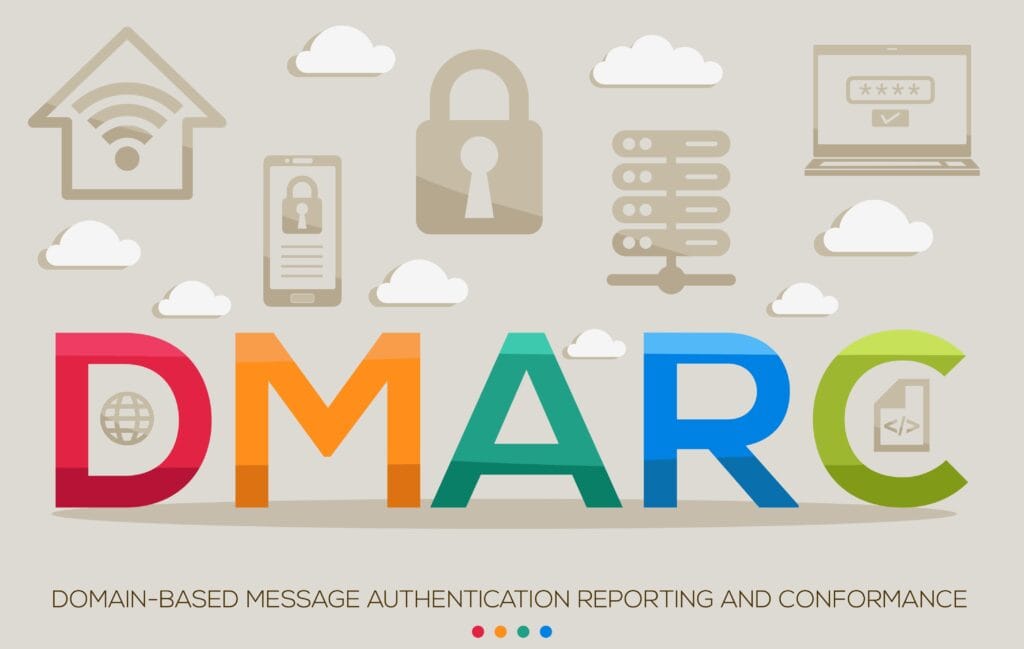
DMARC: Your Business’s Digital Bouncer – Why You Can’t Afford to Ignore It
As a business owner, you’re juggling a million things – sales, marketing, operations, keeping your team happy. The last thing you probably want to think about is some techy acronym like DMARC. But here’s the thing: ignoring DMARC is like leaving your business’s front door wide open in a busy city. And believe me, there are plenty of digital opportunists out there looking to walk right in.
So, let’s cut through the jargon and talk about what DMARC is, and why it’s not just an IT problem, but a critical business necessity.
What in the World is DMARC? (Think of it as your email’s VIP list)
DMARC stands for Domain-based Message Authentication, Reporting, and Conformance. Still sounds complicated, right? Let’s simplify.
Imagine your business has a very exclusive club – your email inbox. You only want legitimate guests (emails) to enter, and you want to be able to identify and turn away imposters.
DMARC is like the bouncer at your club’s door. Before an email from your company’s domain (e.g., yourname@yourbusiness.com) even reaches someone’s inbox, DMARC tells the receiving email server three key things:
- “Is this email actually from yourbusiness.com?” (Authentication): DMARC uses two established security checks, SPF and DKIM, to verify if the email sender is legitimate. Think of SPF as checking the return address on an envelope, and DKIM as looking for a special, unforgeable stamp from your business.
- “What should I do if it’s NOT from yourbusiness.com?” (Policy): This is where you, the business owner, get to set the rules. You can tell other email servers:
- “Just monitor it” (None): Let the email through, but tell me if it looks suspicious. (Like a bouncer noting down a suspicious character but letting them in for now).
- “Quarantine it” (Quarantine): Put it in the spam folder if it doesn’t pass the checks. (Like a bouncer making a suspicious person wait outside).
- “Reject it outright” (Reject): Don’t even let it reach the inbox if it fails. (Like a bouncer immediately turning someone away).
- “Tell me what’s happening!” (Reporting): This is the goldmine for you. DMARC sends reports back to you, detailing which emails passed the checks, which failed, and why. This gives you a clear picture of who’s sending emails on behalf of your domain, and importantly, who might be trying to impersonate you.
Why is DMARC Not Just a “Nice-to-Have” but a “Must-Have”?
Now that you know what it is, let’s talk about why you, as a business owner, need to care deeply about DMARC.
Protect Your Brand and Reputation:
- Stop Email Impersonation (Phishing & Spoofing): Without DMARC, anyone can send an email that looks like it’s from your business. Imagine a scammer sending emails to your customers, pretending to be you, asking for sensitive information or directing them to fake websites. This can severely damage your brand’s trust and reputation, leading to lost customers and potential legal headaches. DMARC acts as your digital shield against such attacks.
Improve Your Email Deliverability:
- Get Your Emails into Inboxes, Not Spam Folders: Email providers (like Gmail, Outlook, etc.) are increasingly using DMARC to decide whether an email is legitimate. If you don’t have DMARC set up, or it’s misconfigured, your legitimate marketing emails, invoices, and important communications might end up in spam folders – or worse, be rejected entirely. This means your message isn’t reaching your customers, directly impacting your sales and customer service.
Gain Visibility and Control:
- Know Who’s Sending Emails on Your Behalf: DMARC reports give you invaluable insights. You might discover legitimate services (like your marketing automation platform or accounting software) that are sending emails using your domain but aren’t properly authorized. This allows you to fix those configurations and ensure all your legitimate email traffic is correctly authenticated. It also flags unauthorized senders, helping you identify and shut down potential threats.
Comply with Industry Best Practices (and Avoid Being Left Behind):
- The Internet is Getting Smarter: Major email providers are pushing for stronger email authentication. If your business isn’t adopting DMARC, you’re essentially falling behind the curve. This can lead to your emails being treated with suspicion, even if they are legitimate.
The Bottom Line: Don’t Let Your Digital Door Be Wide Open
Think of DMARC as an essential part of your business’s digital security strategy. It’s not just about stopping tech-savvy hackers; it’s about safeguarding your brand, ensuring your messages reach your customers, and ultimately, protecting your bottom line.
While the initial setup might require some IT assistance (or working with a knowledgeable service provider), the ongoing management of DMARC is crucial. Reviewing those reports, adjusting your policies, and ensuring all your legitimate email senders are properly configured will pay dividends in the long run.
Don’t wait until you’re dealing with a brand-damaging email scam or your important messages are getting lost in the digital ether. Take control of your email security now, with DMARC. Your business (and your customers) will thank you for it.
